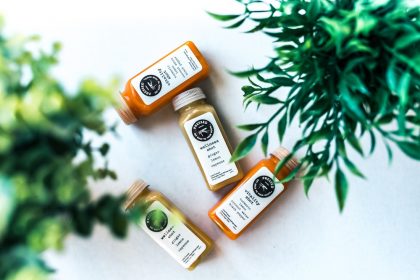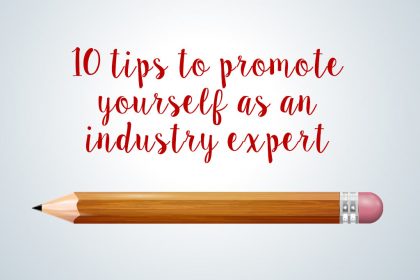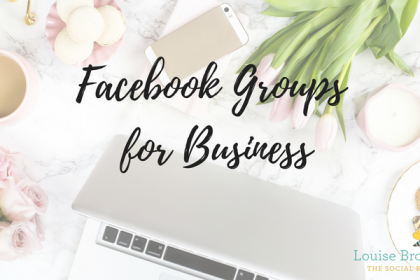Seven creative ways to boost your social media strategy
Love to take a more creative approach to social media? Here are seven ways you can make your brand stand out and reach more customers.
Over half of the people using social media interact with brands at least a couple of times a month. Which means that social media represents a brilliant opportunity for large and small companies increase their brand awareness, and convert users to followers (and followers to website traffic and, hopefully, sales).
But it’s not quite that simple, especially if you are a small business with a limited budget, and even more limited experience using social media.
How exactly DO you get your brand in front of people on social media? And then how do you encourage those people to engage with your posts, follow you, and become loyal customers?
Seven creative ways to boost your social media strategy
The competition for attention and followers on social media today is fierce, and building an online presence isn’t easy. But it IS possible, even for a tiny startup.
You just need to use creativity to stand out from the crowd, and find exciting new ways to attract, engage, and delight your audience. Simply being there isn’t enough; you must be unique.
And to help you achieve this, here are seven creative ways to boost your social media marketing strategy. While none of these contain a ‘quick fix’, used properly and consistently, they’ll help you to start getting better results for your business over time.
1) Run campaigns across all your channels
While a small business won’t have the time or capacity to be on every social media channel, the chances are you’re probably on more than one.
And if you’re running a marketing campaign, make sure you include all your social media accounts for a proper omni-channel experience.
Luckily, thanks to social media marketing automation tools, you don’t need to actually BE on every channel all the time for omnichannel marketing. Instead, plan your posts at the start of the campaign and schedule them in. Then allocate blocks of time each day to boost your campaign with live interaction on your channels.
2) Encourage user-generated content
A huge 88% of consumers say they trust online reviews written by other consumers as much as they trust recommendations from their personal contacts.
Which means, as a modern-day variant of word-of-mouth, reviews from customers can really impact your business, and even make or break your social media strategy.
So don’t leave them to chance.
Instead, encourage positive user-generated content by inviting satisfied customers to share why they love your brand.
For example, you can use Facebook or Instagram stories to ask your followers to express their opinions and experiences about your products or services. Then repost them along with a thank you note.
3) Invest in influencer marketing
Influencer marketing relies on mutually beneficial collaborations between brands and social media ‘stars’ with a shared target audience.
Halfway between ads and user-generated content, sponsored relationships are the fastest growing channel for customer acquisition.
These sponsored relationships aren’t just about amplifying your social media reach; influencer marketing also helps with credibility.
So how do you find, and work with influencers? It’s important to choose someone whose following fits your own target audience.
And don’t assume you need to spend a fortune trying to engage a big player. Micro-influencers with a smaller, but very niche and loyal, following can work just as well for a much smaller budget.
(To help you plan and run a successful influencer campaign, we recommend you read these dos and don’ts.)
4) Organise contests as an incentive
Another creative approach to social media marketing is to solicit likes, comments, and shares through classic incentive techniques.
To do this you just need to offer a discount or free shipping as a prize, and organise a contest around it. The only thing your audience needs to do is interact with your post.
If you make your contest playful, you won’t even need to give away a freebie.
This example from Nightsky Shop is perfect for social media:
The company uses Instagram for sharing compelling photos of their products. In a recent campaign, they pushed the following contest: “Tag someone, if they don’t respond in 2 minutes, they have to buy you a Constellation Lamp!”. It’s easy, fun, and effective.
To help you plan a successful competition, check out these seven dos and don’ts.
5) Ask questions to boost engagement
Too many businesses get so caught up in planning their marketing strategies around social media, that they forget that most people use social media primarily to socialise, not browse for ads and shop.
These are conversational networks that rely on open dialogue. So, as a brand, you need to both take part in social interactions and encourage your followers to chat.
The best way to do that is by asking creative questions. For example, “What would make you smile today?” is a nice conversation opener.
Questions don’t just help you to boost engagement, either. Ask the right questions and you’ll also get a deeper understanding of your niche audience and their purchasing behaviour.
You can even make your questions very direct, to help you gain valuable information (without appearing to be information gathering). For example: “What can we do to make your day better?”
6) Include paid elements in your campaigns
While it’s great to plan an organic marketing social campaign that gathers its own momentum without requiring paid investment, sometimes nothing works as well as an ad.
And social media ads can work powerfully in conjunction with an organic campaign to significantly boost your response (and your return on investment).
For example, targeted Facebook ads can help you to both spread your brand message and find new followers and generate high-quality leads.
And by analysing your email list, Facebook can identify other users with interests similar to those of your customers, enabling you to reach a new, but potentially valuable, audience.
It’s important, however, to always bear in mind the 80:20 rule, and ensure than 80% of your social media content is engaging and useful, and only 20% is devoted to self-promotion.
7) Measure your strategy performance
But simply optimising your social media strategy isn’t enough. If you don’t monitor and review its performance, you’ll have no way of knowing whether it works. Or importantly, what elements of your campaign are working (and can be replicated or invested further in) and which aren’t (and need to be tweaked or dropped).
Social media marketing automation tools can help you stay on top of all your key performance indicators. And the more detailed your insight, the better.
Aside from creativity, automation is the most crucial element here. You need a clear idea of which social media KPIs to measure and how to use automation tools for this.
If you have a marketing team or intern working on this for you, make sure they get the right employee training to manage this properly. They need to be monitoring your social media ROI for on-platform engagement, reach, leads, and conversions.
Ready to increase your social media results?
You don’t need to have the luxury of being able to work full time on your social media marketing to see dramatic results. 81% of respondents said they saw an increase in web traffic by investing just six hours a week on social media. And 91% said it gave them increased exposure.
If you’re ready to increase your results and invest more time in getting social media right, we recommend reading these articles:
- Five questions to help you build a social media strategy
- 10 steps to building a social media strategy that WORKS!
- 18 tips to help you grow your brand (and your sales) on social media
- 11 ways a non-visual business can compete on social media
Kamy Anderson is an ed-tech enthusiast with a passion for writing on emerging technologies in the areas of corporate training and education. He is an expert in learning management system and eLearning authoring tools – currently associated with ProProfs Training Maker.
Photo by Daria Nepriakhina










